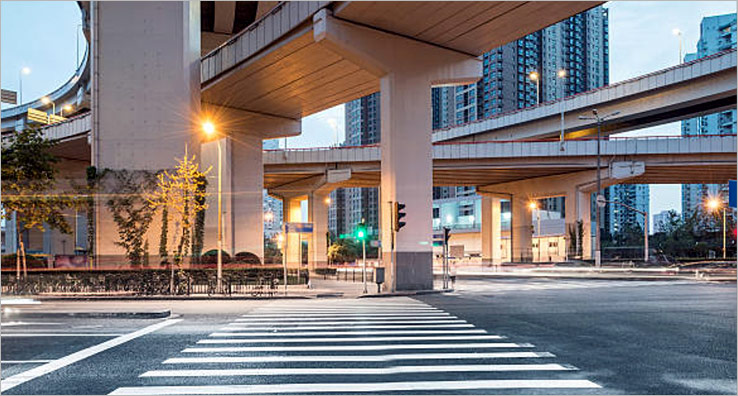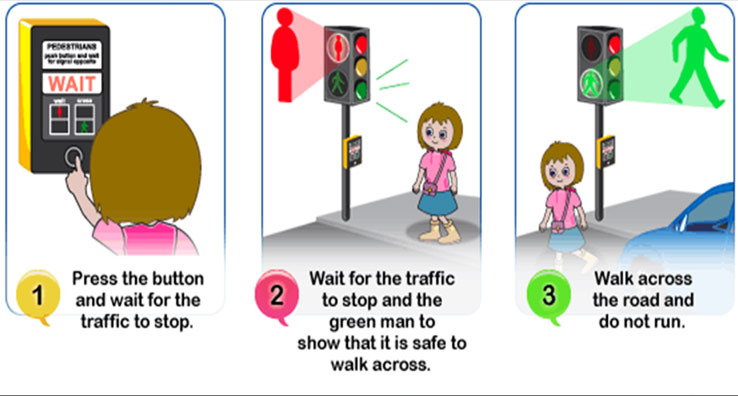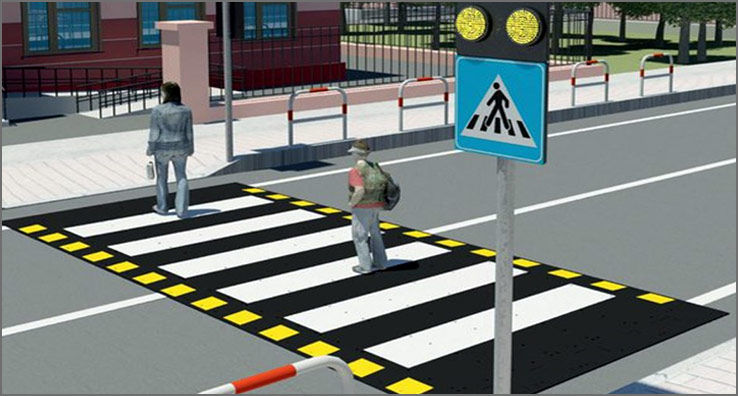
APCS is a technology driven solution designed to enhance pedestrian safety and improve traffic flow at intersection and crosswalks.
This system utilizes various sensors, real time data analysis, and responsive traffic signal controls to create a safer and more efficient environment for both pedestrians and drivers.
Overall, An Adaptive Pedestrian Crossing System is a forward-thinking approach to urban traffic management, aligning with the goals of safety, efficiency, and sustainability in modern city planning.
Salient Features


Adaptive Pedestrian Crossing System
M P2cross
M P2cross is a smart innovation of a series of design and development towards solution for pedestrian crossing systems. Our R & D have invested number of years for bringing an Adaptive pedestrian crossing solution for traffic control and smooth mobility. M P2cross is intelligent pedestrian systems comprehensively monitor the pedestrians are crossing or will cross crosswalks for alerting drivers there ahead will be pedestrians, and alerting pedestrians you will pass crosswalks consequently ensuring the safety of both driver and pedestrian.
Here are some key components and features of such a system:
1. Sensors: The system typically incorporates a variety of sensors to detect the presence of pedestrians and vehicles. These sensors can include:
a. Pedestrian detectors: These can use infrared sensors, cameras, or other technologies to identify pedestrians waiting to cross or already in the crosswalk.
b. Vehicle detectors: Inductive loop sensors or cameras can be used to detect vehicles approaching the intersection.
c. Environmental sensors: These can include weather sensors to account for changing weather conditions and adjust crossing signals accordingly.
2. Data Processing: The data collected from sensors is processed in real-time by a central control unit. Advanced algorithms analyze this data to determine when and how to change the crossing signals.
3. Adaptive Signal Control: The system adjusts traffic signal timings dynamically based on the detected presence of pedestrians and vehicles. For instance:
a. If a pedestrian is waiting to cross, the system can extend the green light duration or provide a pedestrian-specific crossing phase.
b. If there is heavy pedestrian traffic, the system can prioritize pedestrian crossing times over vehicle traffic.
c. It can also optimize signal timings based on historical traffic patterns and time of day.
4. Communications: The system can be equipped with communication tools to relay information to pedestrians and drivers. This might include pedestrian walk signals, countdown timers, and vehicle signal lights.
5. Integration: Integration with other traffic management systems and infrastructure is crucial. This includes connecting to traffic management centers, traffic lights, and pedestrian push-button systems.
6. Emergency Response: The system can be programmed to respond to emergency situations by quickly clearing the intersection or providing a safe route for emergency vehicles.
7. Accessibility: Ensuring the system is accessible to all pedestrians, including those with disabilities, is essential. This can involve audible signals, tactile indicators, and crosswalk design considerations.
8. Data Logging and Analysis: The system can store data for analysis, helping traffic engineers make ongoing improvements and adjustments to optimize safety and efficiency.
Benefits of an Adaptive Pedestrian Crossing System:
Overall, an Adaptive Pedestrian Crossing System is a forward-thinking approach to urban traffic management, aligning with the goals of safety, efficiency, and sustainability in modern city planning
Keyword : Speed Control Sign, Traffic Dynamic Sign, Traffic Sign, LED Speed Control and dynamic Sign Board manufacturer, Speed Sign Manufacturer, LED Speed Sign Board, LED Sign, Tunnel Sign Board Manufacturer.